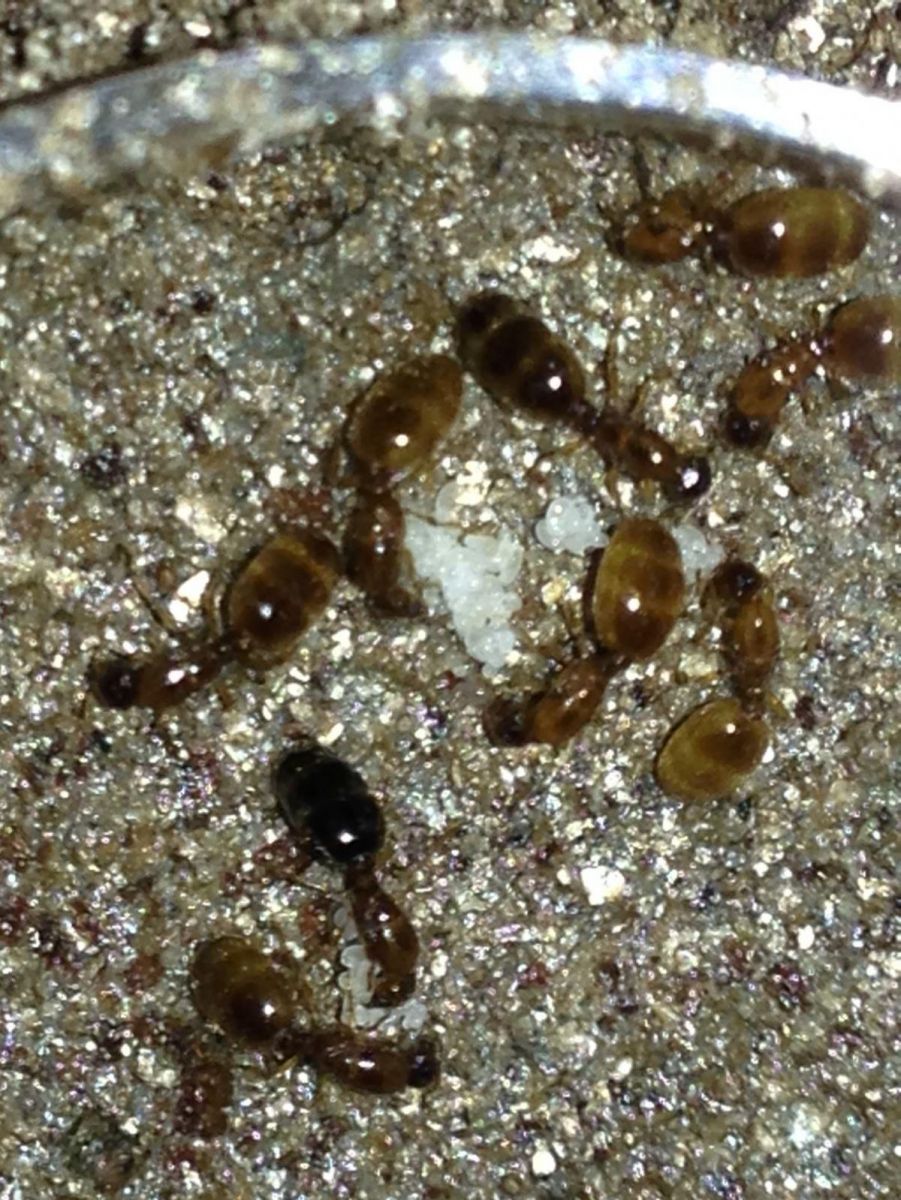Wanted to share this pic of my Solenopsis molesta queens (9) going well together.
I just was informed that the two with dark gasters likely have parasites so I will be removing them:


Wanted to share this pic of my Solenopsis molesta queens (9) going well together.
I just was informed that the two with dark gasters likely have parasites so I will be removing them:

Current Colonies:
Aphaenogaster tennesseensis (50 Workers)
Formica subsericea (5+ Workers)
Tetramorium caespitum (50+ Workers)
Parastic Lasius (15 Accepted Host Workers)
Crematogaster cerasi (10 + Workers)
Temnothorax sp. (70 + workers)
Wow, who told you that?
someone in another forum mentioned that the ones with black gasters may have parasitic nematodes if they are not a different species
Current Colonies:
Aphaenogaster tennesseensis (50 Workers)
Formica subsericea (5+ Workers)
Tetramorium caespitum (50+ Workers)
Parastic Lasius (15 Accepted Host Workers)
Crematogaster cerasi (10 + Workers)
Temnothorax sp. (70 + workers)
Yikes. What if they ate something of dark color?
I have probably had them 3 or 4 weeks now - they have always been this color. Pretty interesting- they were all caught on my back patio in a big swarm. They were landing as fast as I was picking them up.
Current Colonies:
Aphaenogaster tennesseensis (50 Workers)
Formica subsericea (5+ Workers)
Tetramorium caespitum (50+ Workers)
Parastic Lasius (15 Accepted Host Workers)
Crematogaster cerasi (10 + Workers)
Temnothorax sp. (70 + workers)
Did you just seperate them and put them in a different setup? I'd still want to see if it was really parasitic.
yep, that is my plan when I get home- I will seperate them into their own test tube
Current Colonies:
Aphaenogaster tennesseensis (50 Workers)
Formica subsericea (5+ Workers)
Tetramorium caespitum (50+ Workers)
Parastic Lasius (15 Accepted Host Workers)
Crematogaster cerasi (10 + Workers)
Temnothorax sp. (70 + workers)
0 members, 0 guests, 0 anonymous users